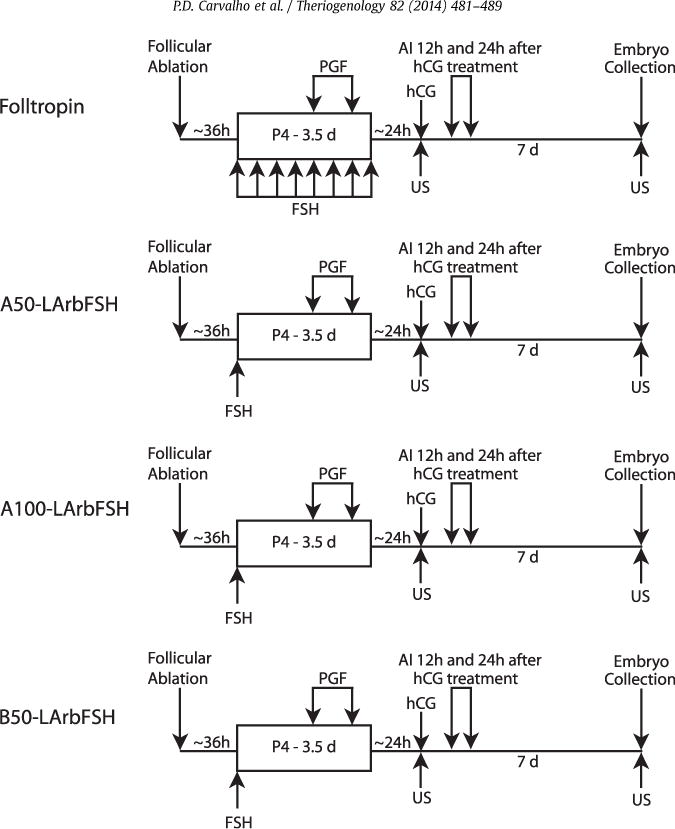Fig. 1.

Schematic representation of experimental procedures (not to scale). Starting at a random stage of the estrous cycle, all follicles of 5 mm in diameter or greater were ablated and heifers were randomly assigned to one of four treatments (n = 14 heifers per treatment). Approximately 36 hours after follicle ablation, an intravaginal P4 device was inserted, and superstimulatory treatments were initiated. Heifers in treatment 1 (Folltropin) received a total FSH dose equivalent to 300 mg of NIH-FSH-P1 (Folltropin-V) in eight decreasing doses (3.0, 3.0, 2.0, 2.0, 1.5, 1.5, 1.0, and 1.0 mL) administered im at 12-hour intervals over a 4 day period, heifers in treatment 2 (A50-LArbFSH) received 50 μg of LArbFSH (type A) in a single im injection, heifers in treatment 3 (A100-LArbFSH) received 100 μg of LArbFSH (type A) in a single im injection, and heifers in treatment 4 (B50-LArbFSH) received 50 μg of LArbFSH (type B) in a single im injection. All heifers received two PGF2α injections at 48 and 72 hours after P4 device insertion (concomitant with the fifth and seventh FSH injection on treatment 1), and P4 devices were withdrawn 84 hours after insertion (concomitant with the last FSH injection in treatment 1). Twenty-four hours after P4 device removal, ovulation was induced with 2500 IU of hCG. Heifers were inseminated twice at 12 and 24 hours after hCG treatment by one technician. Seven days after hCG treatment, embryos were nonsurgically flushed.
